Air Quality Alert: What to Do When the Air Turns Dangerous
Whether it’s drifting wildfire smoke or lingering smog, unhealthy air quality demands quick, informed action. Here’s how to protect yourself


In early June 2023, the sky above the Eastern US turned a thick, apocalyptic shade of orange-red. Schools canceled recess. Outdoor graduation ceremonies were postponed. Major League Baseball delayed games. The air smelled of smoke, and officials urged everyone to stay indoors. Those who ventured outside were advised to wear protective face masks. For millions, even a brief step outdoors posed a health risk.
The reason? Air pollution.
Hundreds of miles away, wldfires raged across Canada. Carried by a relentless northwest wind, a massive cloud of smoke drifted over cities such as New York, Philadelphia, Boston, Baltimore, and Washington, DC. A dense, choking haze settled in, driving air quality to some of the worst levels these cities had ever seen. For a time, the Northeast Megalopolis recorded the highest Air Quality Index on planet Earth, surpassing cities long infamous for pollution.
June 2023 was an extreme case, but not an isolated one. Air pollution isn’t just a far-off problem or an occasional nuisance; it’s a persistent, invisible threat that affects us all, year-round.
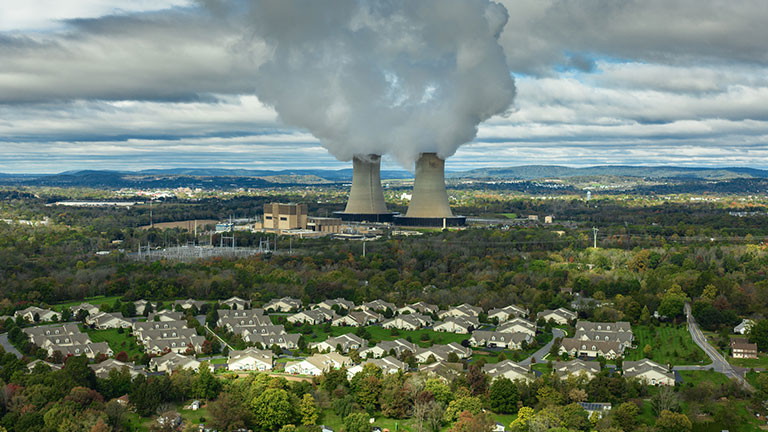
Air pollution basics
Air pollution comes in many forms, but it generally falls into two main categories: fine particle pollution and toxic chemical pollutants. Among these, ground-level ozone is one of the most widespread and harmful. Other toxic pollutants include substances such as carbon monoxide, nitrogen dioxide, and volatile organic compounds (VOCs), which also contribute to smog and long-term health risks.
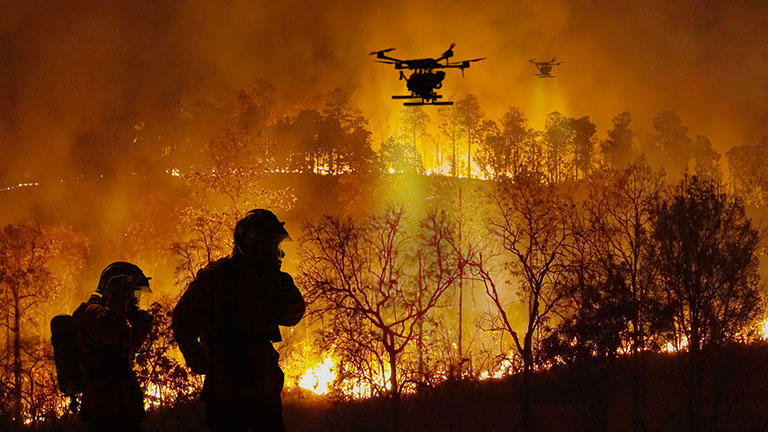
Fine particle pollution
Also known as PM2.5, fine particle pollution refers to tiny airborne particles—solid or liquid—that are small enough to be inhaled. These particles can travel deep into our lungs and even enter the bloodstream, leading to serious health issues.
The smog caused by the Canadian wildfires is a clear example of PM2.5 pollution. High levels of these particles can also come from dust at construction sites, farming activities, pollen, and the burning of fossil fuels in factories, power plants, and vehicles.

Ground-level ozone
Ozone can be good and bad, depending on where it forms. High up in the stratosphere, ozone creates the ozone layer, which protects us from harmful ultraviolet (UV) rays. But at ground level, ozone is a harmful pollutant.
Ironically, ozone pollution is most likely to form on the most beautiful days—warm, sunny, and with light winds. In these conditions, heat and stagnant air trap pollutants near the surface, allowing ozone to form and accumulate. Though invisible, it acts as a strong irritant and can pose serious health risks, especially for children, the elderly, and people with respiratory conditions.
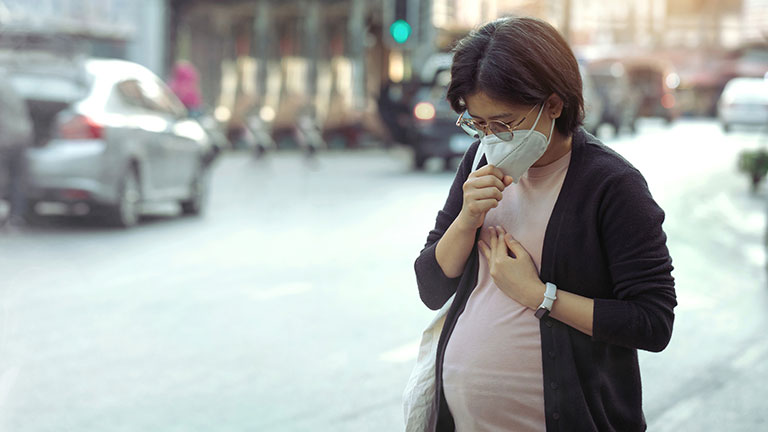
Health risks of air pollution
Some people face higher health risks from air pollution. For some, it comes with the job. Certain occupations, such as driving a truck, involve constant exposure to vehicle emissions and other pollutants. Others are more sensitive to it due to age or health conditions.
Groups most at risk include the following:
- People with existing health conditions, especially respiratory or cardiovascular issues
- Children (due to developing lungs and more outdoor activity)
- Older adults
- Outdoor workers (e.g., truck drivers and construction workers)
But the truth is, polluted air is a health hazard for everyone. Breathing poor-quality air forces the respiratory system to work harder to deliver oxygen, which can do the following harm:
- Reduce lung function
- Inflame airways
- Increase susceptibility to respiratory infections
- Raise the risk of heart attack, stroke, and chronic obstructive pulmonary disease (COPD)

Other common effects include the following:
- Asthma flare-ups
- Wheezing and dry throat
- Headaches and nausea
- Fatigue and reduced athletic performance
Children are especially vulnerable. Not only are their lungs still developing, but they also tend to spend more time active outdoors, which increases their exposure and oxygen demand.
Long-term exposure can also have deeper impacts. Some studies suggest that exposure during pregnancy and early childhood may increase the risk of developmental disorders such as autism.
Perhaps the biggest danger with air pollution is this: We can’t escape it. Every breath we take is essential to survival. According to the World Health Organization, 99 percent of the global population breathes air with unhealthy levels of pollution.
Thankfully, there are steps you can take to protect yourself and your loved ones.
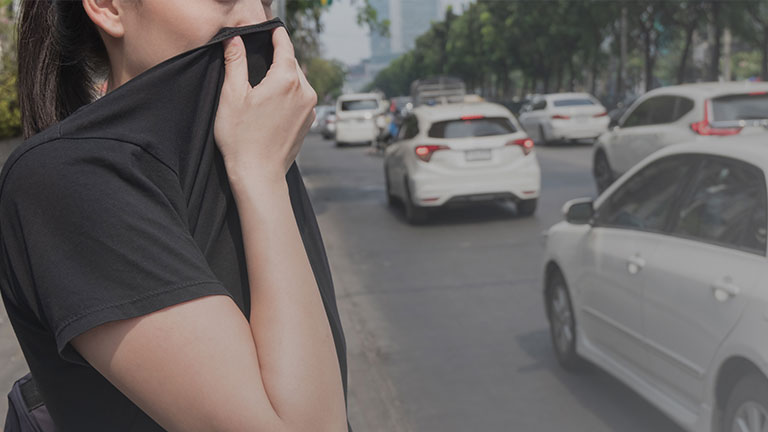
Air quality safety tips
The Environmental Protection Agency (EPA) developed the Air Quality Index (AQI) to report current levels of air pollution. The higher the AQI, the greater the health risk. An AQI of 100 or below is considered within the health-based standard for the general public.
You can easily check your local AQI by visiting AirNow.gov and searching by ZIP code, city, or state. It’s a bookmark-worthy resource for real-time air quality updates in the US.
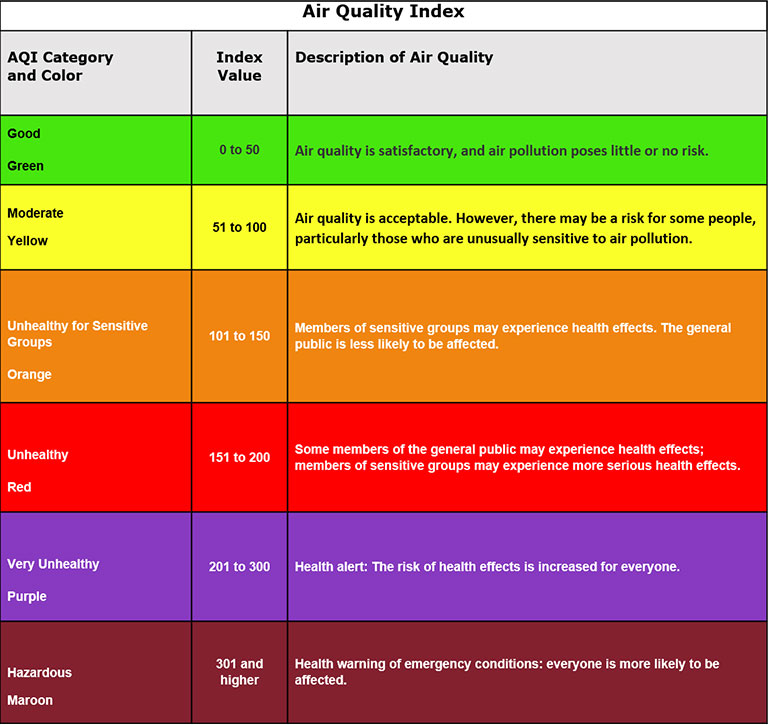
If air quality is poor in your area (AQI in orange, red, purple, or maroon zones), take these precautions:
- Stay indoors as much as possible.
- Limit strenuous outdoor activity to reduce exposure.
- Wear a face mask if you must go outside. Well-fitted N95 or KN95 masks offer the best protection, but any face covering is better than none.
- Keep windows and doors closed to maintain indoor air quality.
- Use recirculation mode in your car’s air conditioning to avoid drawing in polluted outside air.
- Invest in a HEPA air filter to help clean indoor air.
Poor air quality can affect anyone’s health, even those without preexisting conditions. Check a trusted weather source daily to monitor air quality and plan your day or manage health conditions accordingly.
